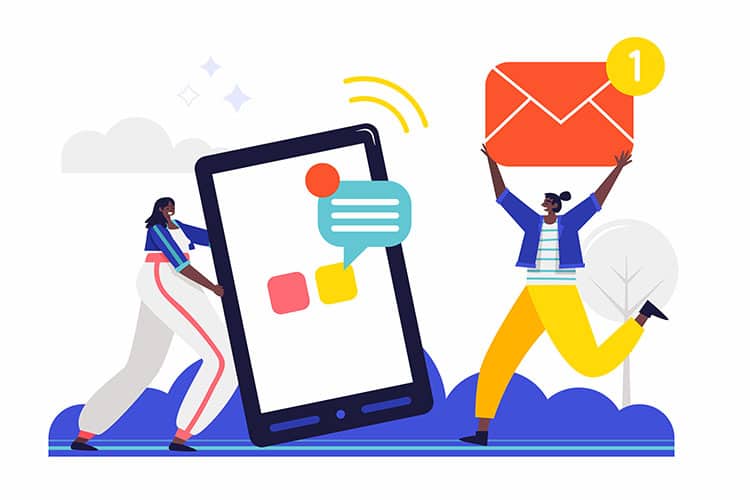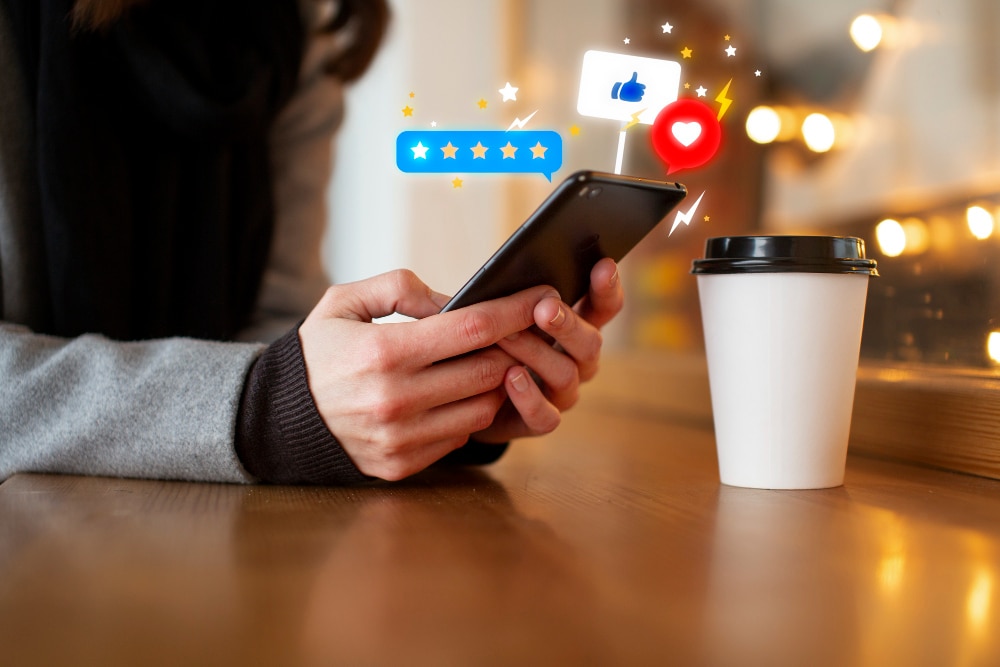Table of Contents
- 1. Personalize Every Message
- 2. Leverage Time-Sensitive Promotions
- 3. Optimize Transactional SMS
- 4. Segment Your Audience for Precision
- 5. Enable Two-Way Communication
- 6. Integrate SMS with Other Marketing Channels
- 7. Include a Strong Call to Action (CTA)
- Additional Tips for Effective SMS Marketing
- Benefits of SMS Marketing for Businesses
- Emerging Technologies Impacting SMS Marketing
SMS marketing has become a powerful way to connect with customers instantly. With open rates nearing 98%, SMS messages have a unique reach advantage over other digital channels, often creating an immediate connection with customers. However, for SMS marketing to be truly effective, brands need strategies beyond merely sending texts. The goal should be to deliver timely, relevant, and engaging messages.
In this post, we’ll explore the top seven SMS marketing strategies you can implement to boost engagement, build loyalty, and drive results.
1. Personalize Every Message
In today’s market, personalization is a must-have in any SMS strategy. Customers increasingly expect brands to know their preferences, interests, and shopping behaviors. Personalized SMS messages allow you to connect more with each customer, helping your brand stand out among the flood of generic marketing messages.
- Why Personalization Matters: Personalized messages feel customized to the customer, which can drive higher engagement and improve response rates.
- How to Implement: Leverage data from your CRM to customize messages based on customer activities, such as browsing history or past purchases.
- Example: “Hi Sarah, thanks for shopping with us! Since you love our eco-friendly products, here’s a 15% discount on your next purchase.”
Adding the recipient’s name and making a recommendation based on their previous actions makes the customer feel appreciated and valued.
2. Leverage Time-Sensitive Promotions
One of the most effective ways to drive quick responses is to create a sense of urgency with time-sensitive offers. SMS is especially suited for time-bound promotions since messages are typically opened within minutes of receipt, compared to emails that might sit unopened for hours or days.
- Why It Works: The feeling of missing out (FOMO) is a powerful motivator. Limited-time offers leverage this to encourage swift action.
- How to Implement: Send these messages during peak engagement times, such as mid-morning or early afternoon for the best results.
- Example: “FLASH SALE! Get 20% off sitewide until midnight! Don’t miss out.”
To maximize urgency, use phrases like “Act Now,” “Only for Today,” or “Last Chance.”

3. Optimize Transactional SMS
Transactional SMS messages provide valuable information, such as order confirmations, shipping updates, and delivery notifications. These messages build trust by informing customers about their purchases and assuring them of the progress.
- Why It Works: Transactional messages add value by keeping customers informed, enhancing trust, and improving customer experience.
- How to Implement: Ensure transactional messages are clear and concise and include relevant links, such as tracking information or support contacts.
- Example: “Your order #1234 has been shipped! Track your package here: [tracking link]. Thanks for shopping with us!”
Customers rely on these messages, so timely delivery is essential. This proactive approach shows that your brand is committed to excellent customer service.
4. Segment Your Audience for Precision
Audience segmentation is essential for delivering relevant content that speaks directly to the interests and needs of different customer groups. By dividing your audience into specific segments based on demographics, purchase behavior, or engagement level, you can tailor your SMS marketing to hit the mark every time.
- Why It Works: Segmented messages align better with customer needs, making them more likely to resonate and convert.
- How to Implement: Group customers by behavior, such as frequent buyers, those interested in specific products, or new subscribers. Use surveys or track purchase histories to define these segments.
- Example: Send a special offer on athletic wear to customers who have shown an interest in sports products.
This approach lets you engage with customers more personally and offers them content they’re likely to find valuable, increasing the chances of conversion.
5. Enable Two-Way Communication
SMS marketing doesn’t have to be a one-way street. Allowing customers to respond to your messages creates a more dynamic, engaging experience. By enabling two-way communication, customers can directly interact with your brand by asking a question, providing feedback, or claiming an offer.
- Why It Works: Customers feel heard and valued when interacting with your brand, improving overall satisfaction.
- How to Implement: Use keywords to automate replies or direct customers to specific actions. For example, customers can text “HELP” for support or “YES” to confirm a booking.
- Example: “Want to book a table for our weekend brunch? Reply YES to reserve your spot!”
Two-way SMS also gives you valuable insight into customer opinions, which can help refine your marketing strategy.

6. Integrate SMS with Other Marketing Channels
A well-rounded marketing approach incorporates multiple touchpoints. Integrating SMS with other marketing channels, such as email, social media, and push notifications, helps create a seamless customer journey. SMS can support other channels by providing reminders, last-minute promotions, or follow-up messages.
- Why It Works: When customers see a consistent message across channels reinforces brand recognition and recall.
- How to Implement: Use SMS as a reminder or follow-up for major campaigns. For instance, after sending an email campaign, use SMS to reach out to those who opened the email but didn’t act.
- Example: Send an SMS reminder to customers who received your email but haven’t redeemed a special offer.
This multi-channel approach enhances the impact of your campaigns and ensures that your brand stays at the top of your mind.
7. Include a Strong Call to Action (CTA)
Every SMS should serve a purpose, and a clear call to action (CTA) is essential. A strong CTA guides the recipient to take the desired action, whether purchasing, signing up for an event, or taking advantage of an offer.
- Why It Works: Clear instructions increase the likelihood of customers taking action, boosting conversion rates.
- How to Implement: Keep your CTA concise and use action-oriented language, such as “Shop Now,” “Get Your Discount,” or “Reserve Your Spot.”
- Example: “Your exclusive 10% off code is here! Use SAVE10 at checkout to claim your discount. Shop now!”
When the CTA is clear, customers know exactly what to do next, which increases their likelihood of following through.
Additional Tips for Effective SMS Marketing
Implementing these strategies effectively requires keeping a few additional best practices in mind:
- Keep Messages Short and Sweet: SMS messages should be brief. Stick to 160 characters or less to keep the message concise and impactful.
- Respect Timing and Frequency: Sending messages at the right time and without overwhelming frequency ensures customers remain engaged without feeling bombarded.
- Ensure Compliance: Adhere to regulations like the Telephone Consumer Protection Act (TCPA) and the General Data Protection Regulation (GDPR), and always offer a clear opt-out option.
- Track Performance: Use metrics like open rates, click-through rates, and opt-out rates to assess the success of your campaigns and make improvements.
Benefits of SMS Marketing for Businesses
- Increased Engagement Rates: SMS marketing boasts significantly higher open and response rates compared to other channels like email. With open rates of around 98%, SMS messages are almost guaranteed to be seen, making them an excellent choice for time-sensitive promotions and important updates. This high engagement can lead to better customer satisfaction and quicker action on promotions.
- Direct and Immediate Communication: SMS is one of the most direct forms of communication available. Messages are delivered instantly and, on average, read within three minutes, making SMS an effective channel for urgent announcements or limited-time offers. This immediacy helps businesses reach customers at the exact moment they’re most likely to respond.
- Personalization and Customer-Centric Messaging: SMS allows for highly personalized and customer-centric communication. With tools that enable segmentation and personalization, businesses can tailor messages to each customer’s preferences, behaviors, or purchase history, making the interactions feel personal and relevant. This level of targeting strengthens customer relationships and enhances loyalty by showing customers that the brand understands and values them.

Emerging Technologies Impacting SMS Marketing
- AI and Machine Learning: AI-driven automation has transformed SMS marketing by enabling deeper personalization and smarter message timing. AI analyzes customer behaviors and preferences to craft individualized messages and predict optimal send times, increasing engagement and response rates. Machine learning algorithms can adapt in real-time, adjusting campaigns based on user feedback or interaction patterns to optimize effectiveness.
- 5G Expansion: With 5G networks becoming more widespread, SMS marketing capabilities are further enhanced by faster, more stable connections. This improvement means SMS messages instantly reach recipients, even in data-heavy locations, making incorporating rich media such as images, video clips, or interactive links easier. Faster data speeds also encourage more seamless SMS integration with mobile web experiences, like product pages or live support, enhancing the user experience.
- Integration with Other Channels: Combining SMS with channels like email, social media, and push notifications creates a comprehensive marketing strategy that reaches customers wherever they are. SMS serves as a highly engaging touchpoint that can complement longer-form channels like email for announcements, while social media ads or app notifications provide additional reinforcement. This holistic approach keeps the brand top-of-mind and creates a consistent, omnichannel experience that drives better engagement and customer satisfaction.
Final Thoughts
SMS marketing offers a direct way to communicate with customers, delivering high engagement and response rates. However, the key to successful SMS marketing is thoughtful, customer-centric strategies. By personalizing messages, creating urgency with limited-time offers, providing valuable transactional information, and integrating SMS with other marketing efforts, you make a dynamic approach that engages customers and builds long-term loyalty. Each strategy is vital in crafting resonating messages, ensuring your brand stands out in the crowded digital space.
With these seven SMS marketing strategies in place, your brand can connect with customers in a way that feels immediate, relevant, and valuable. Start applying these tips today, and watch your engagement and conversions soar!






